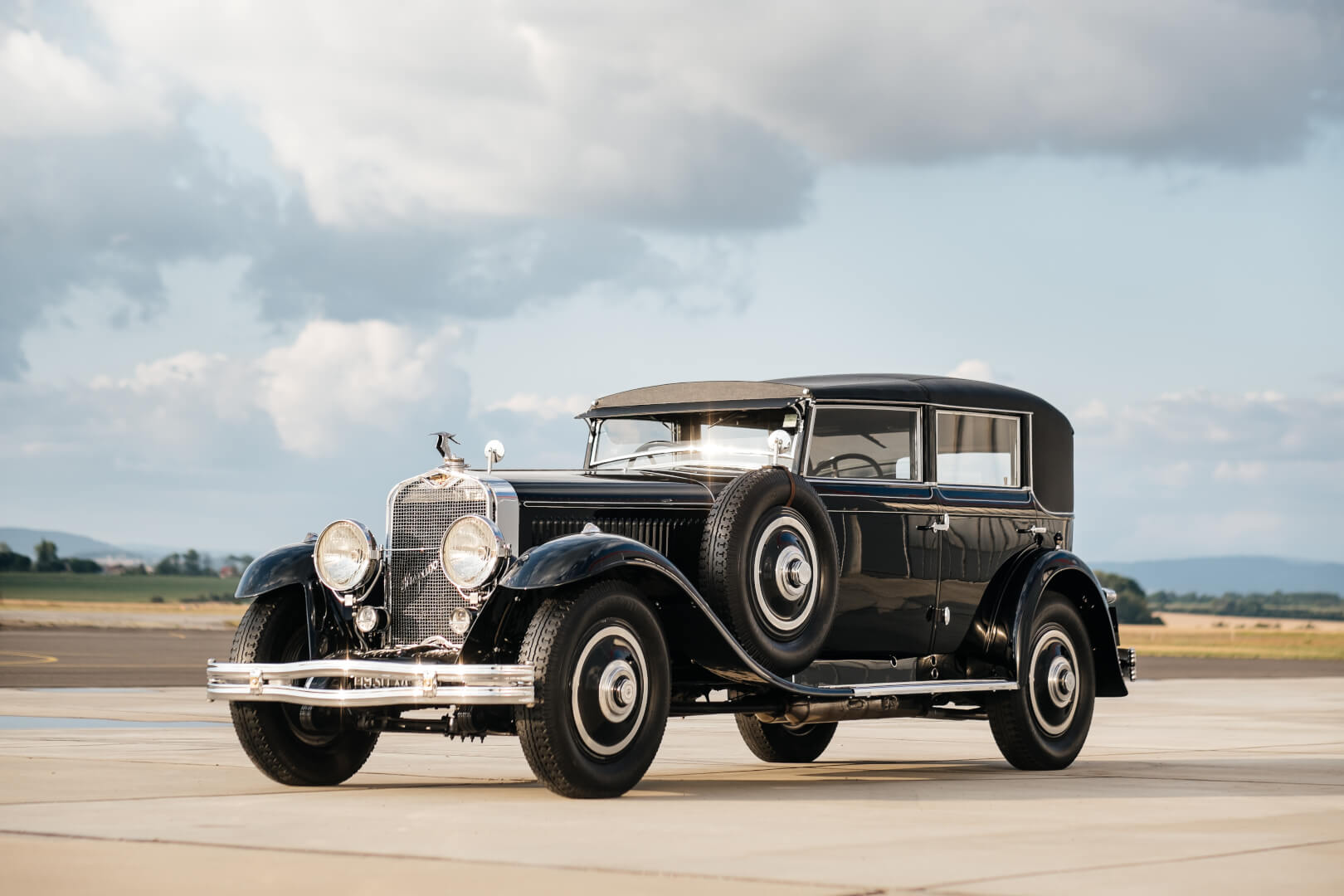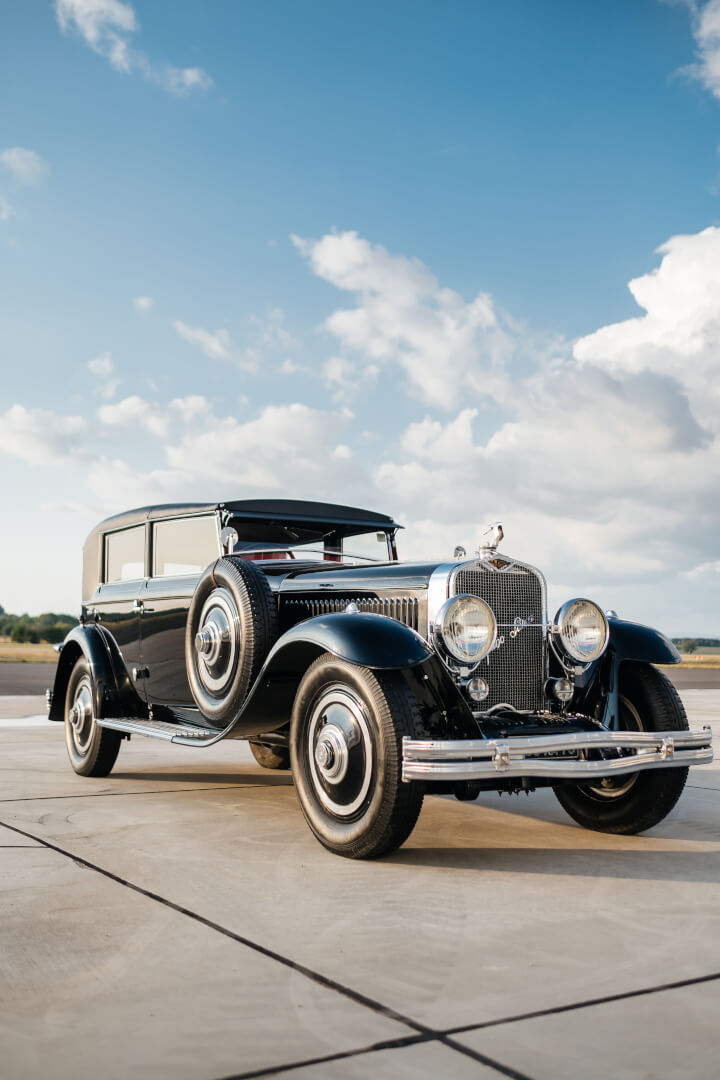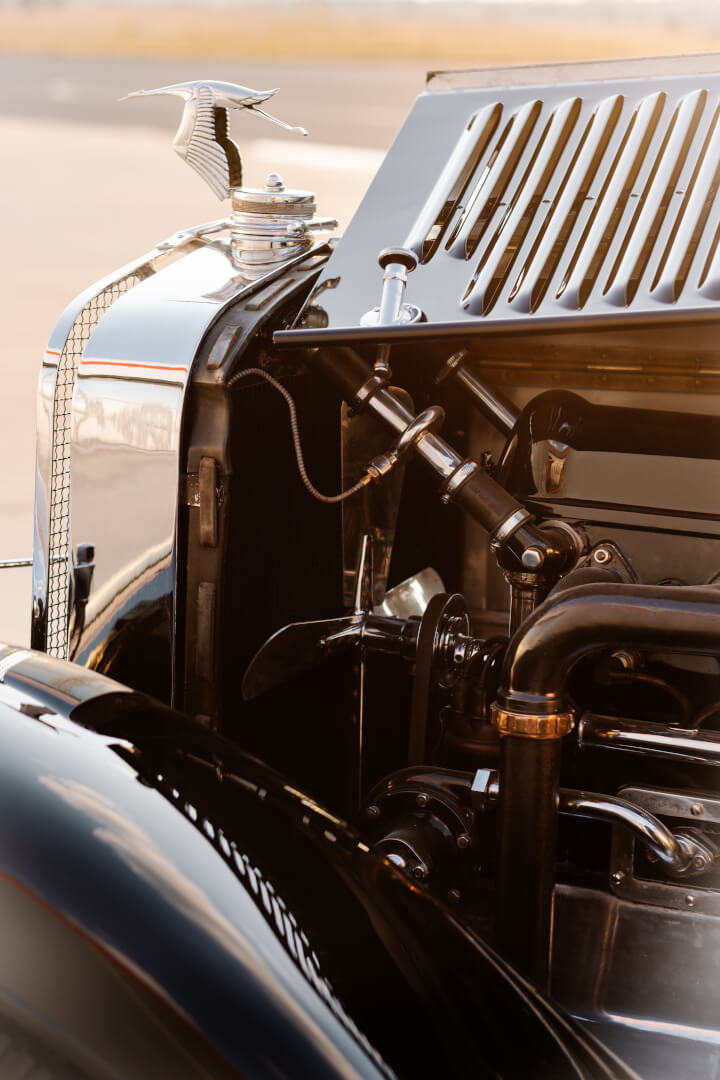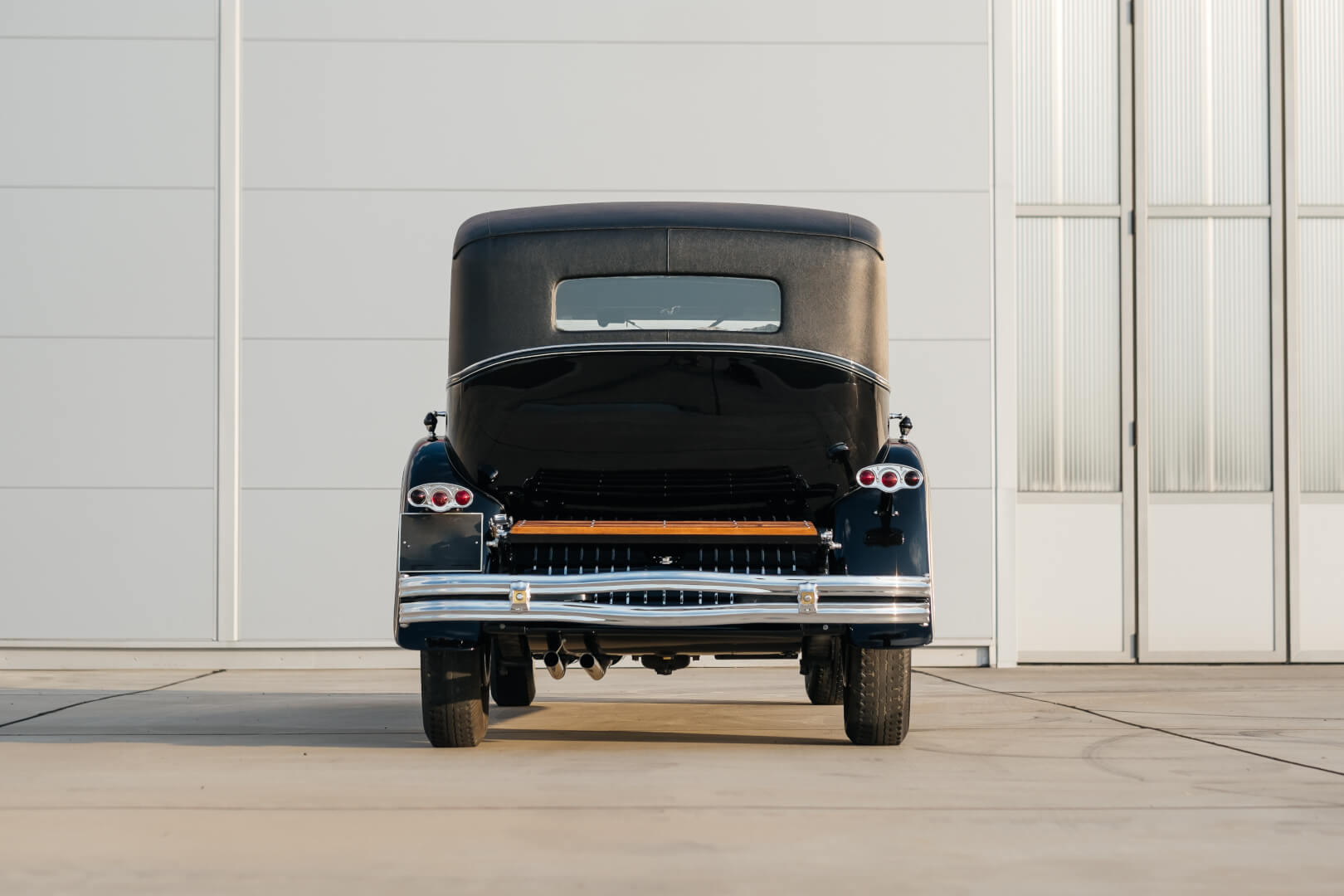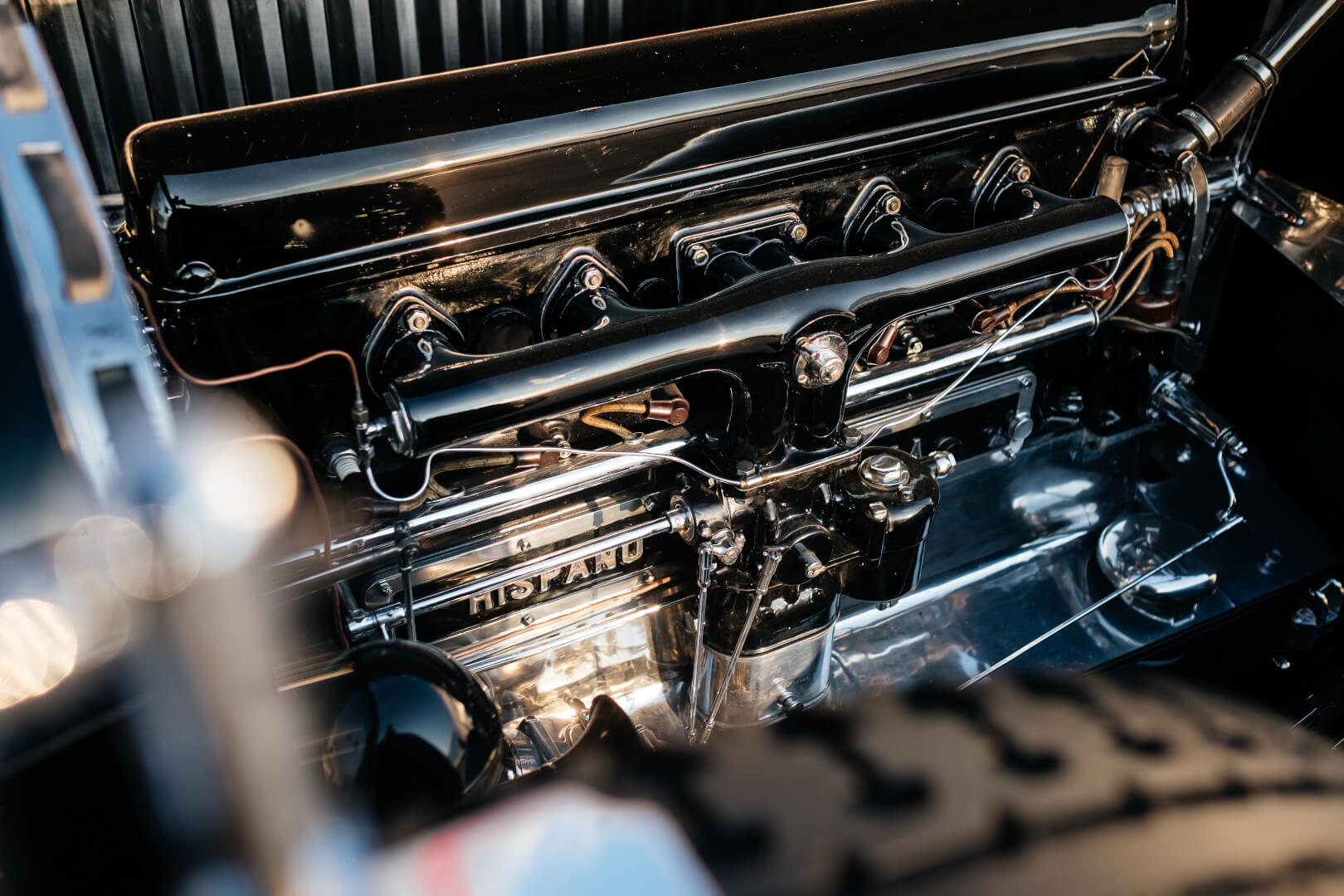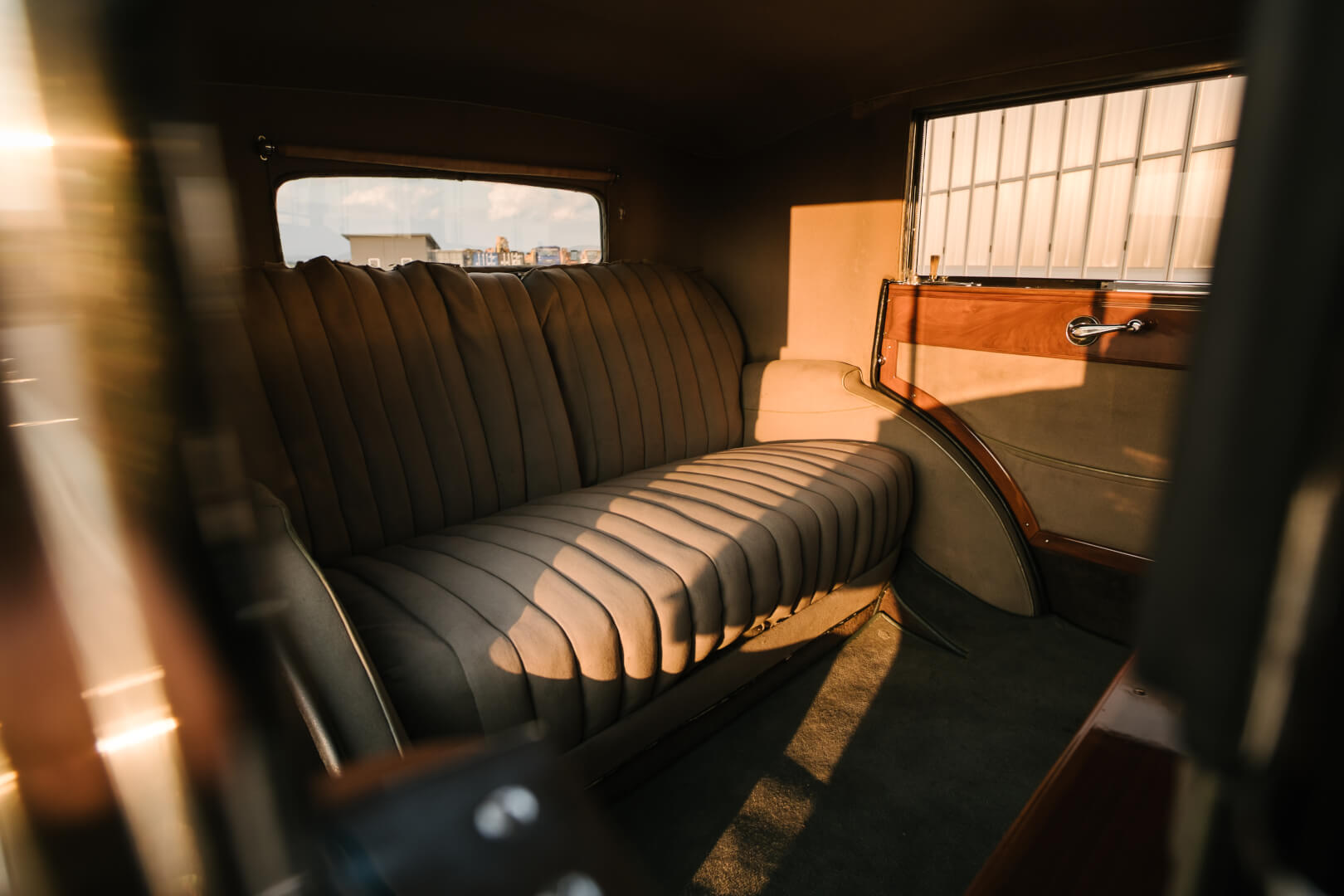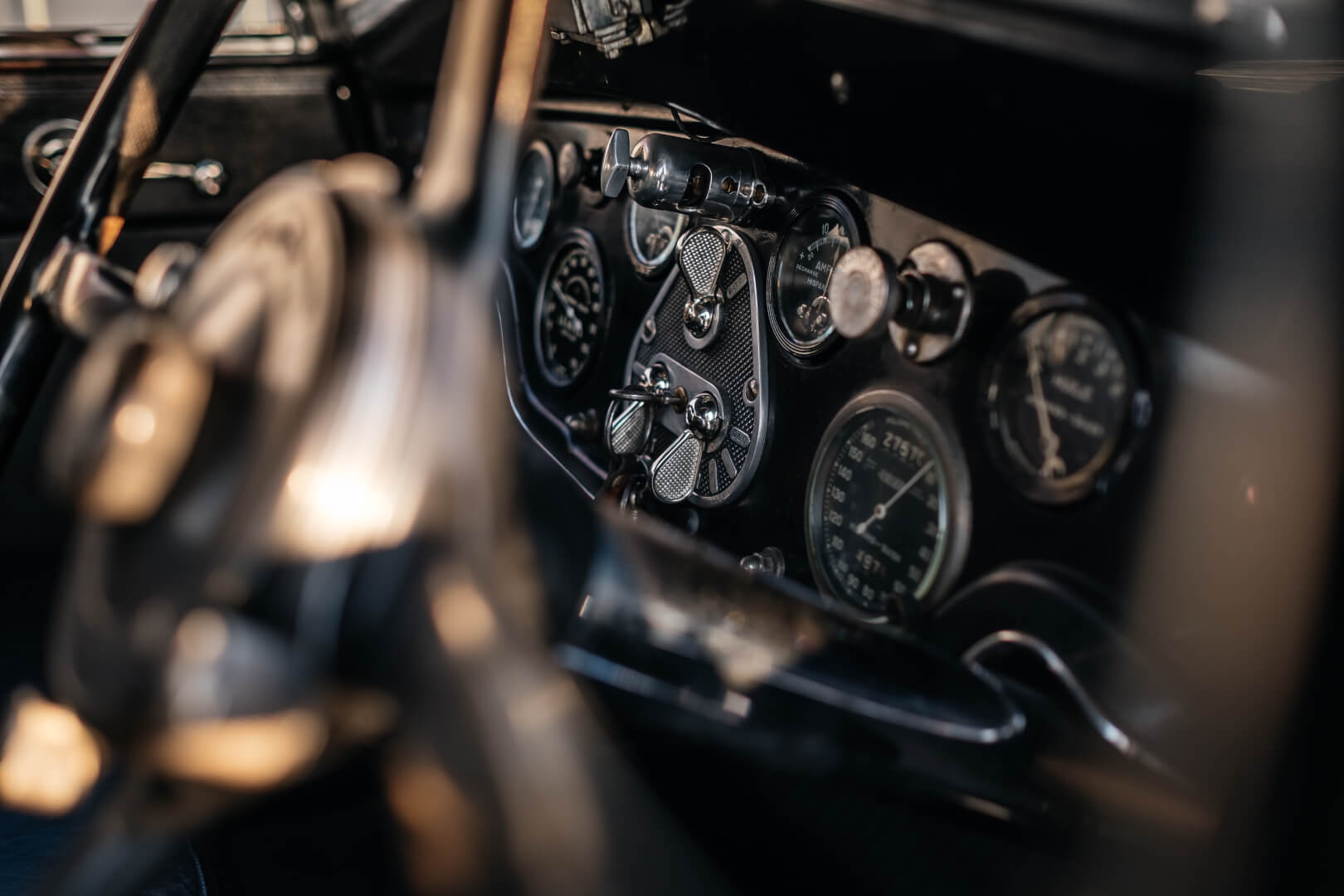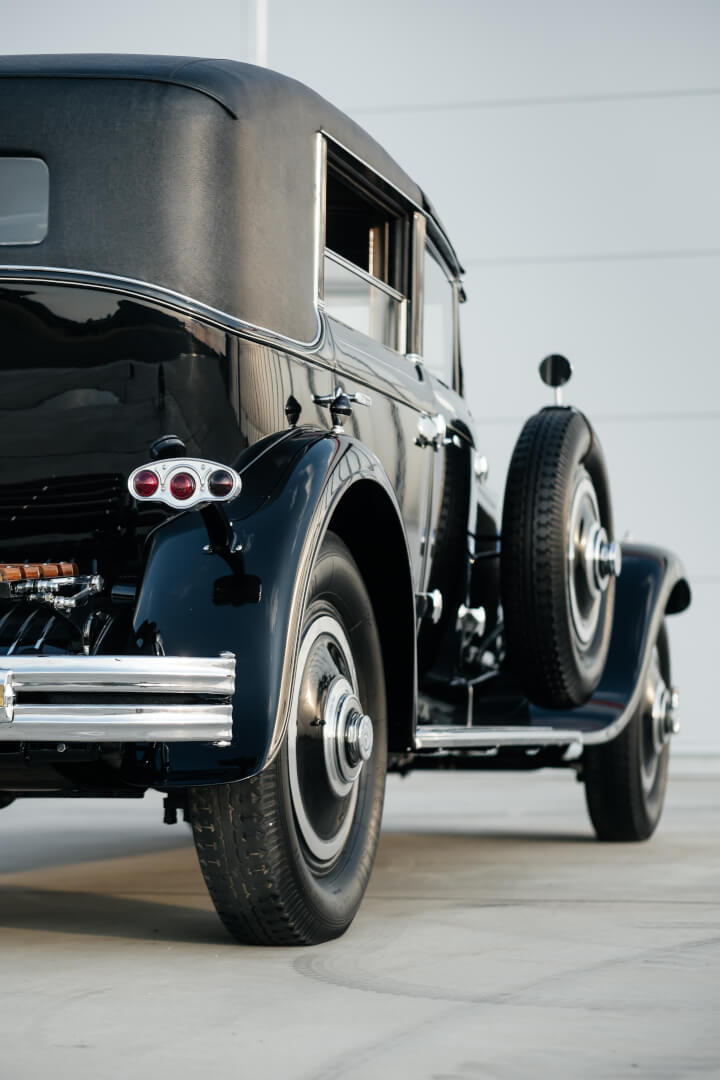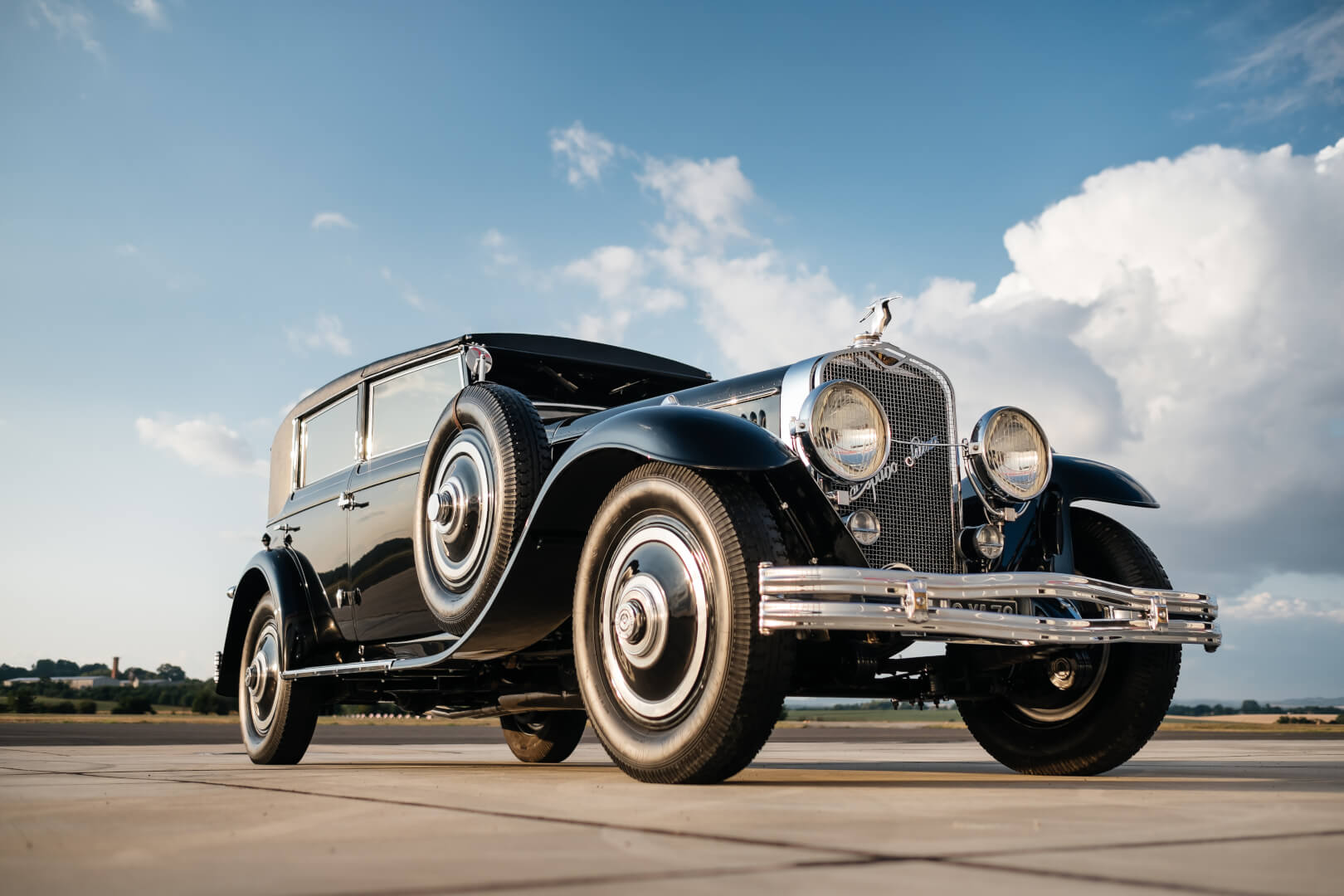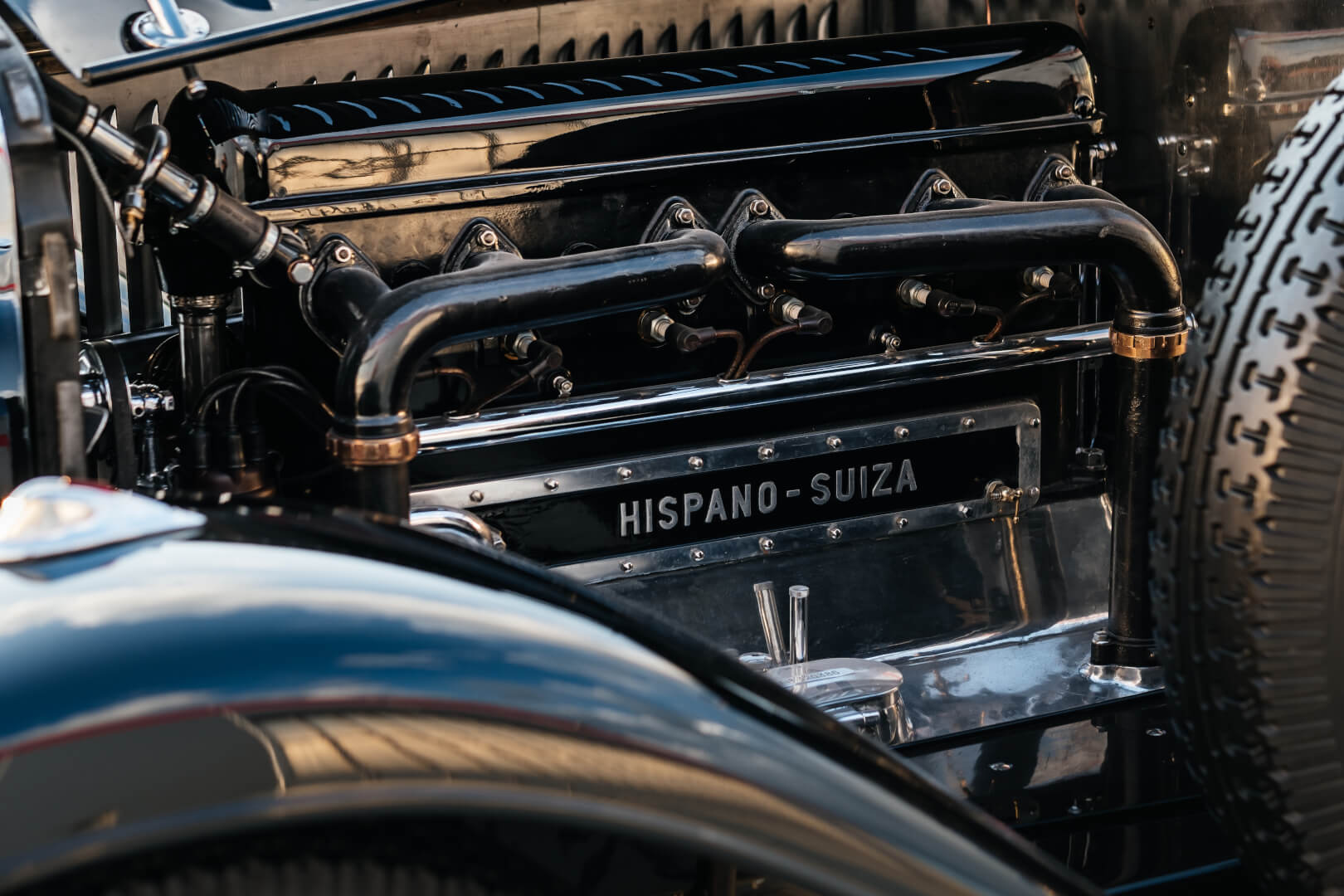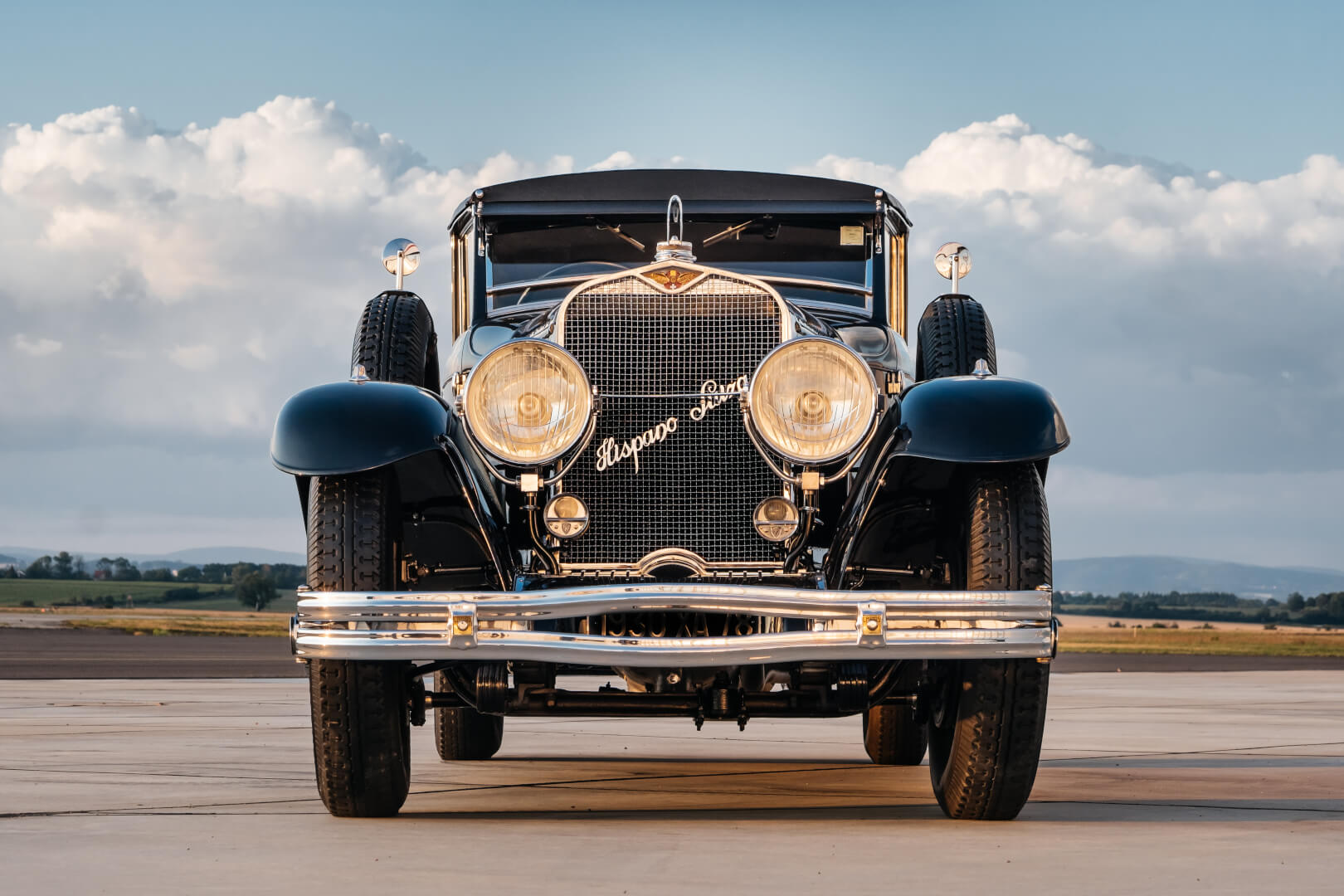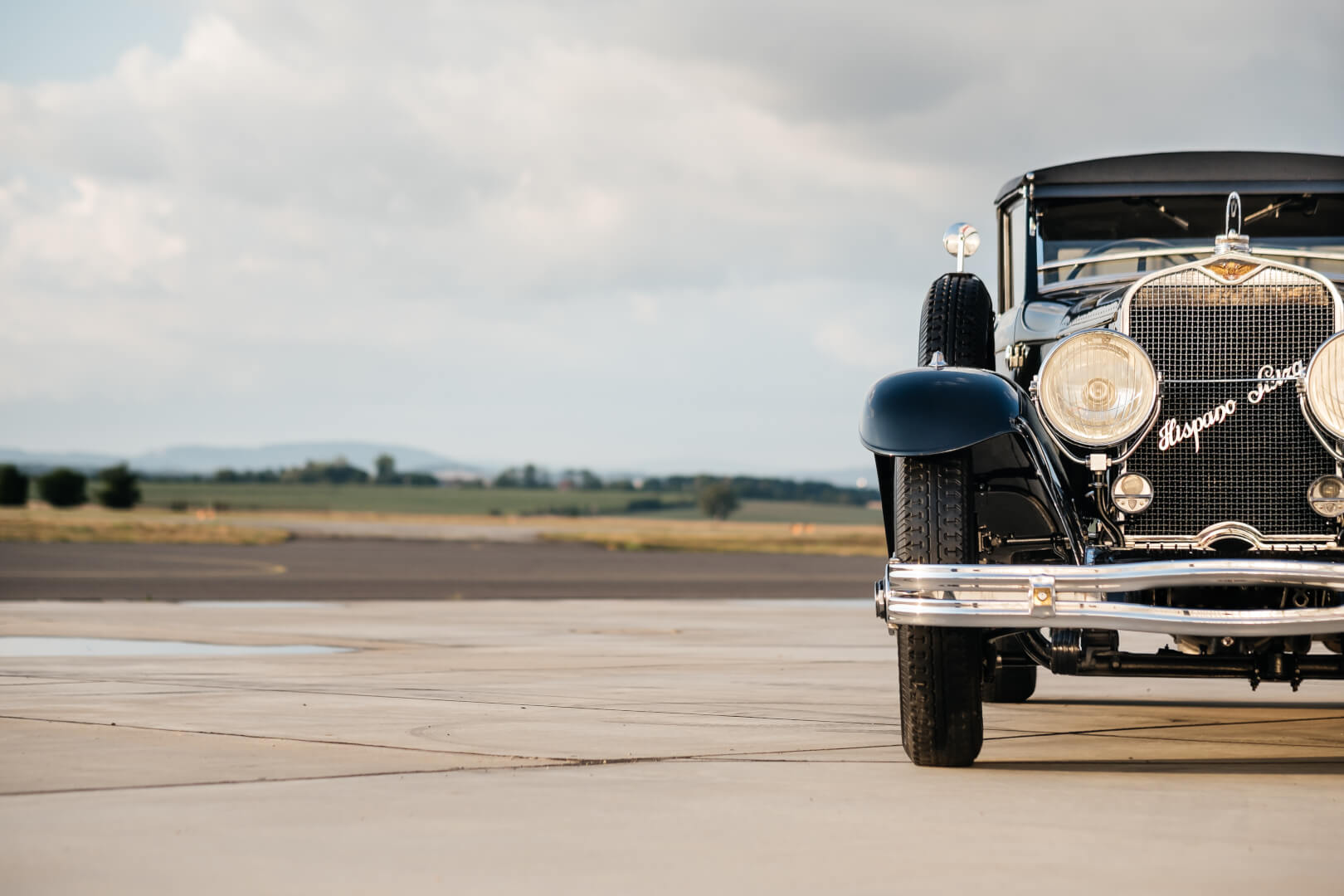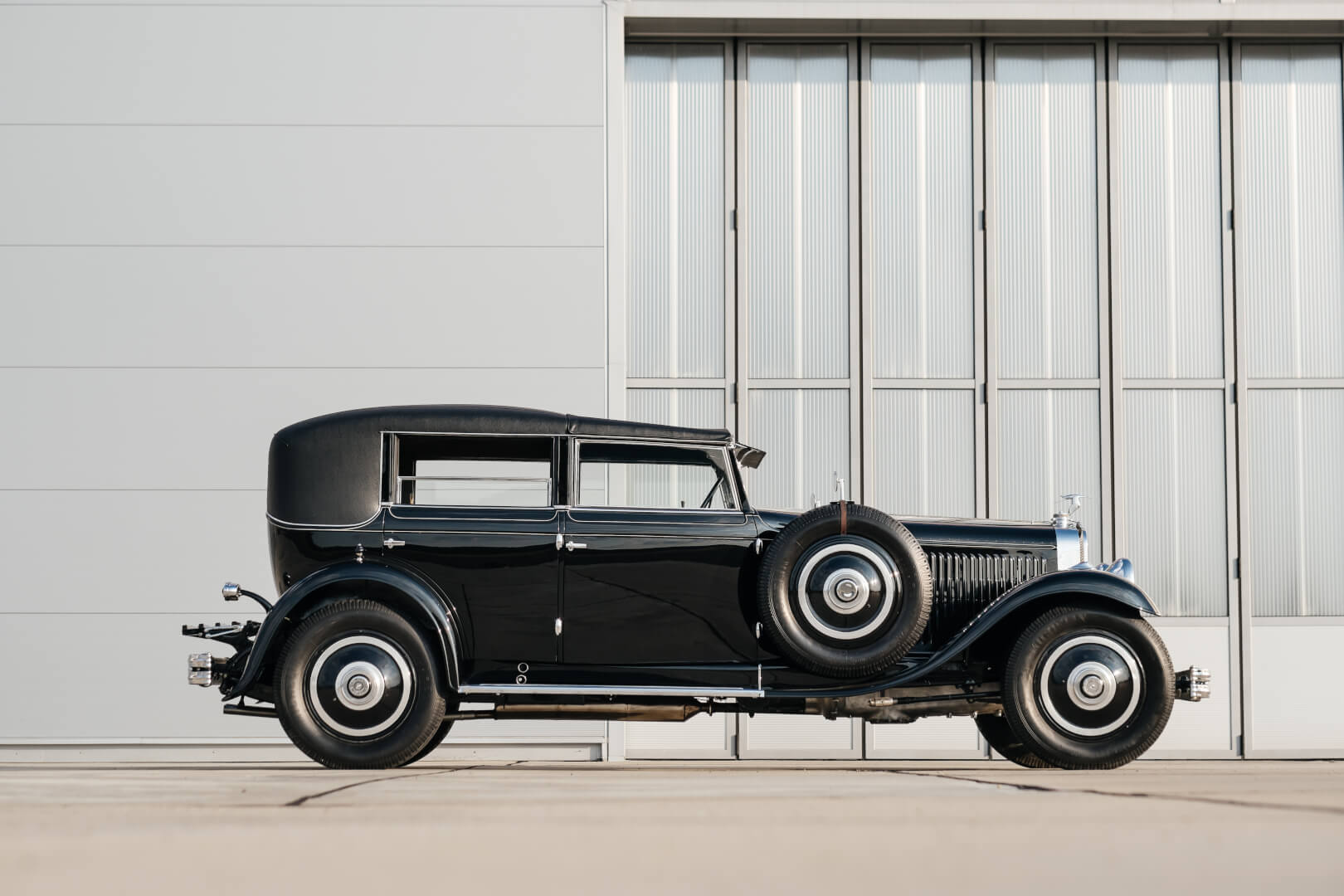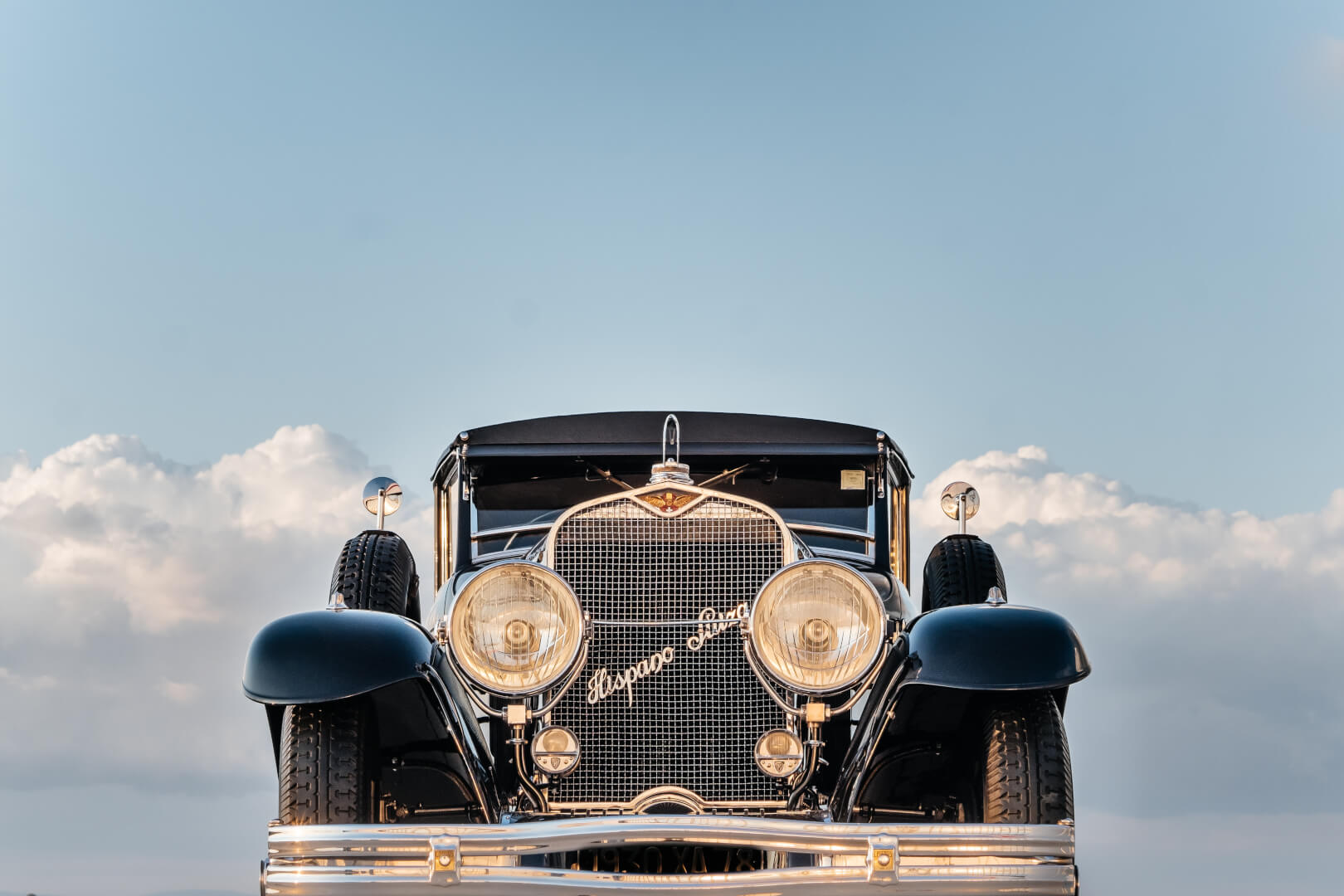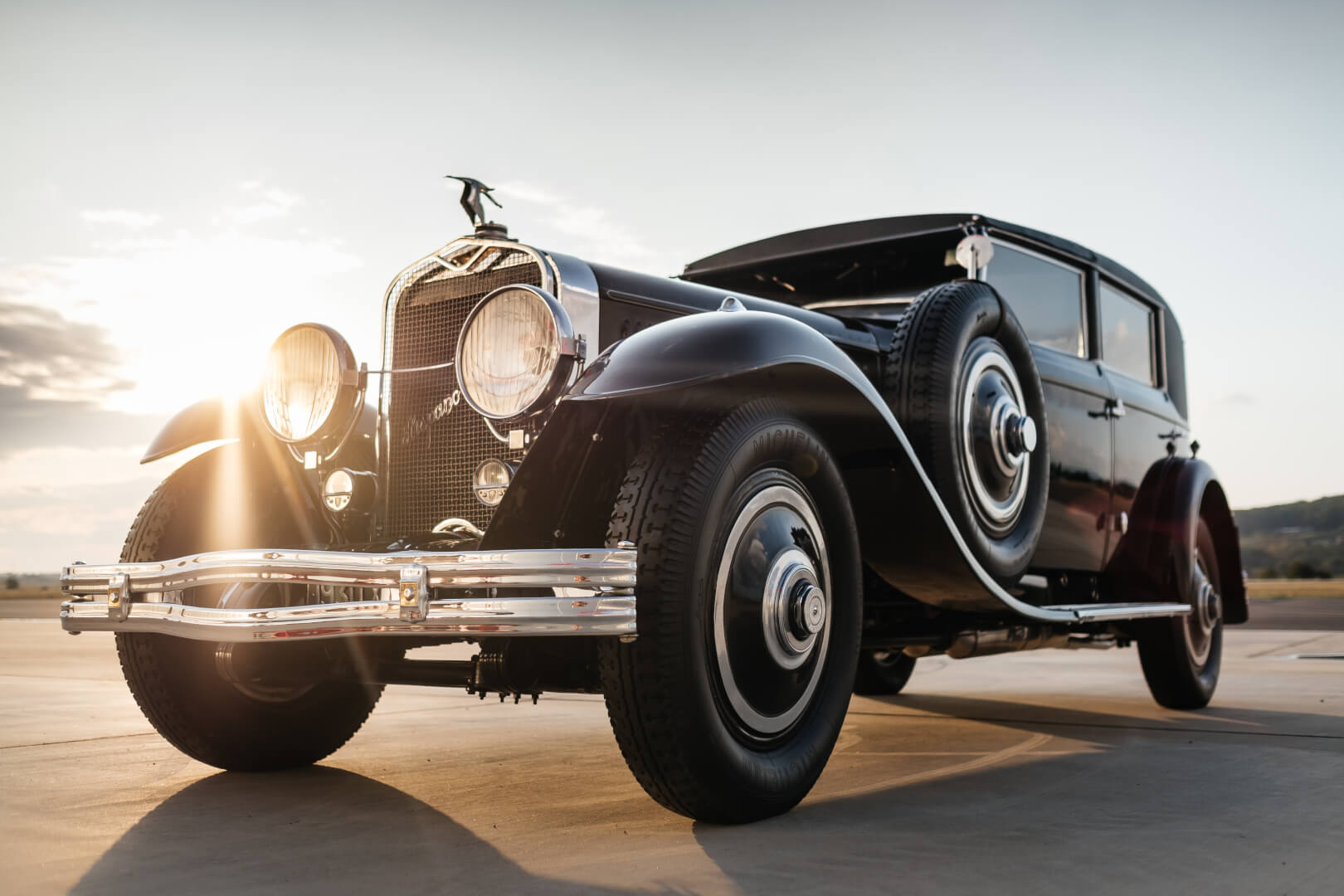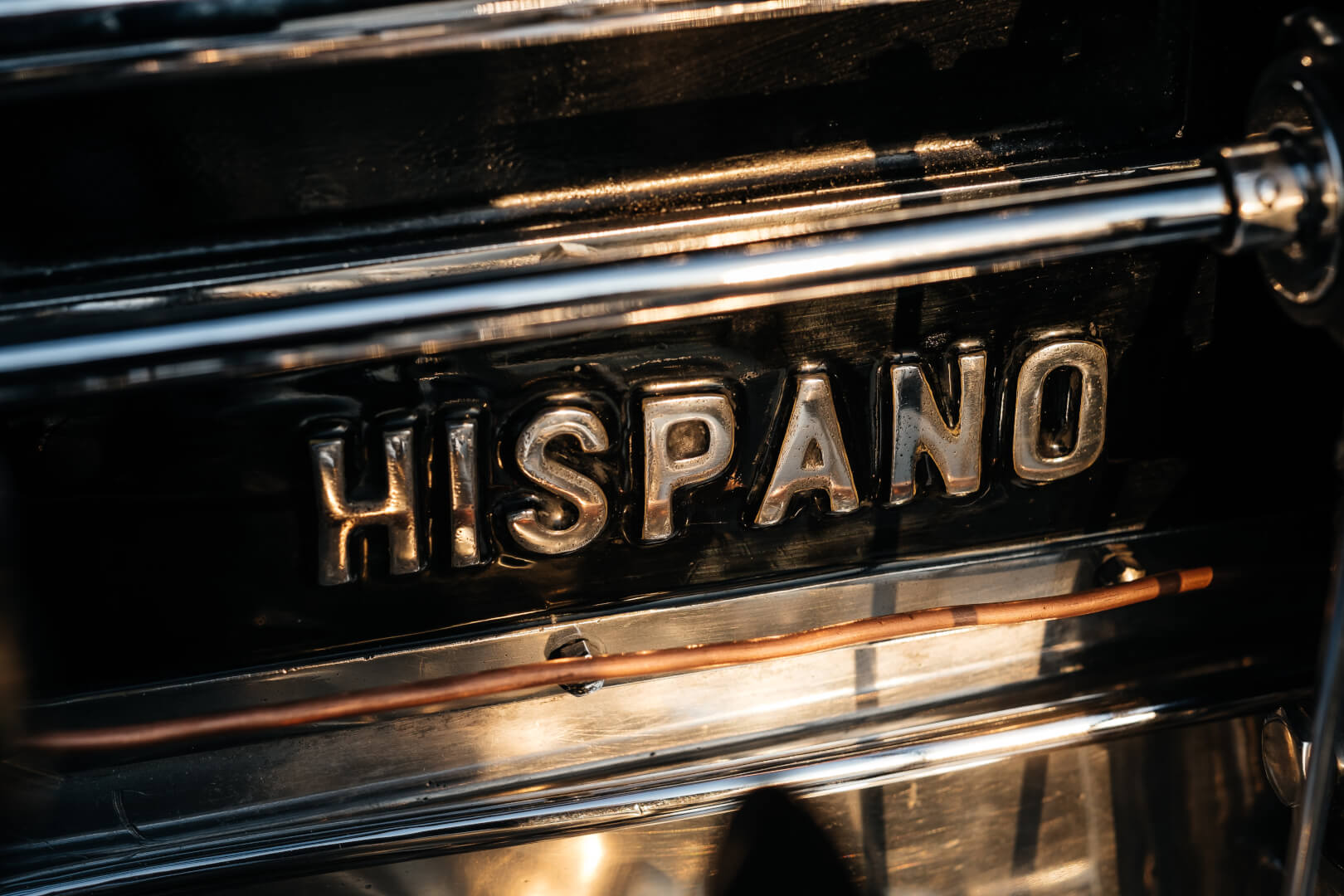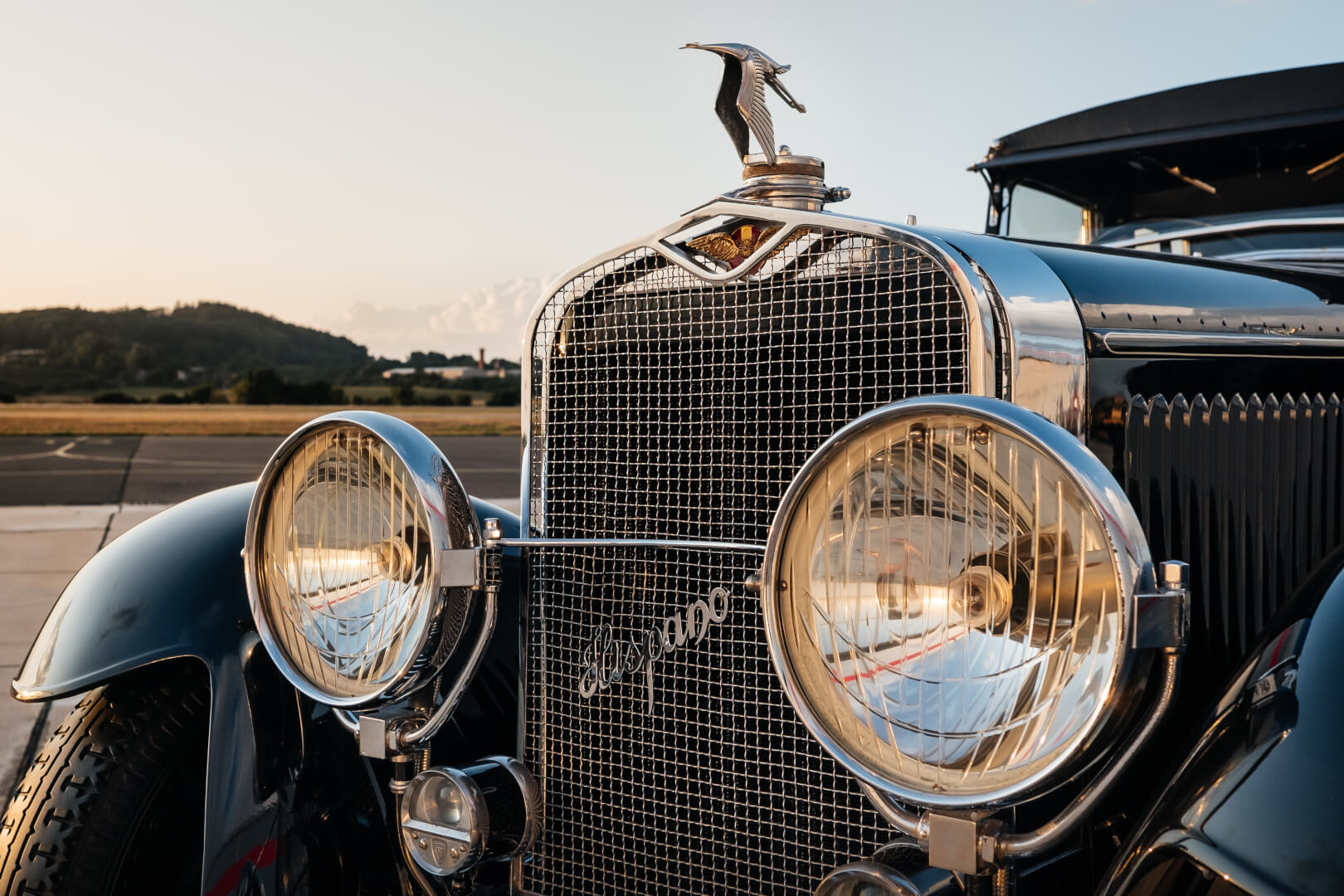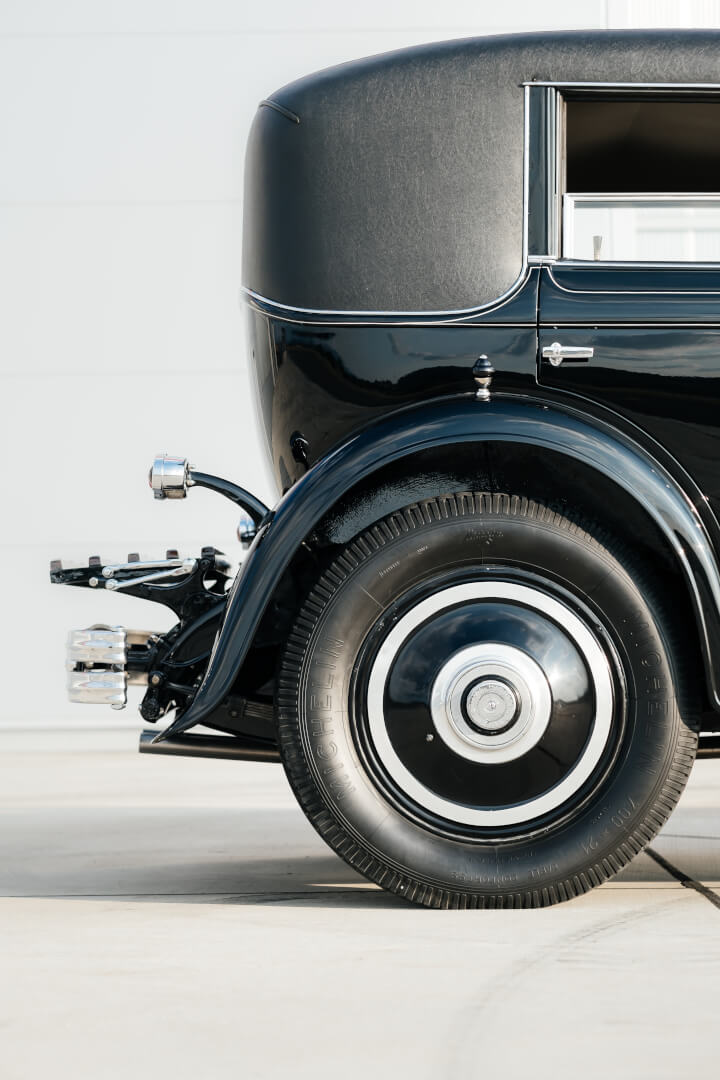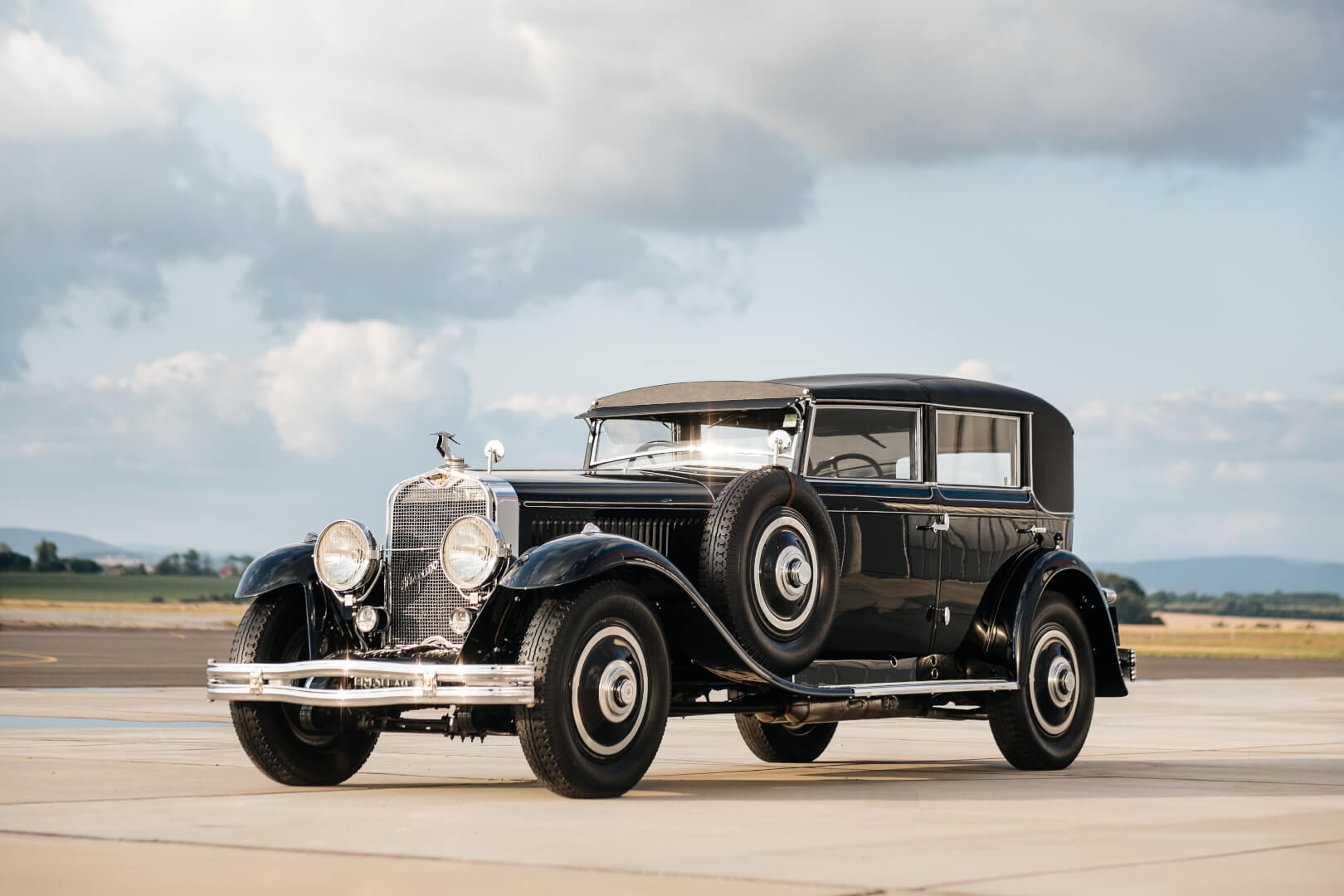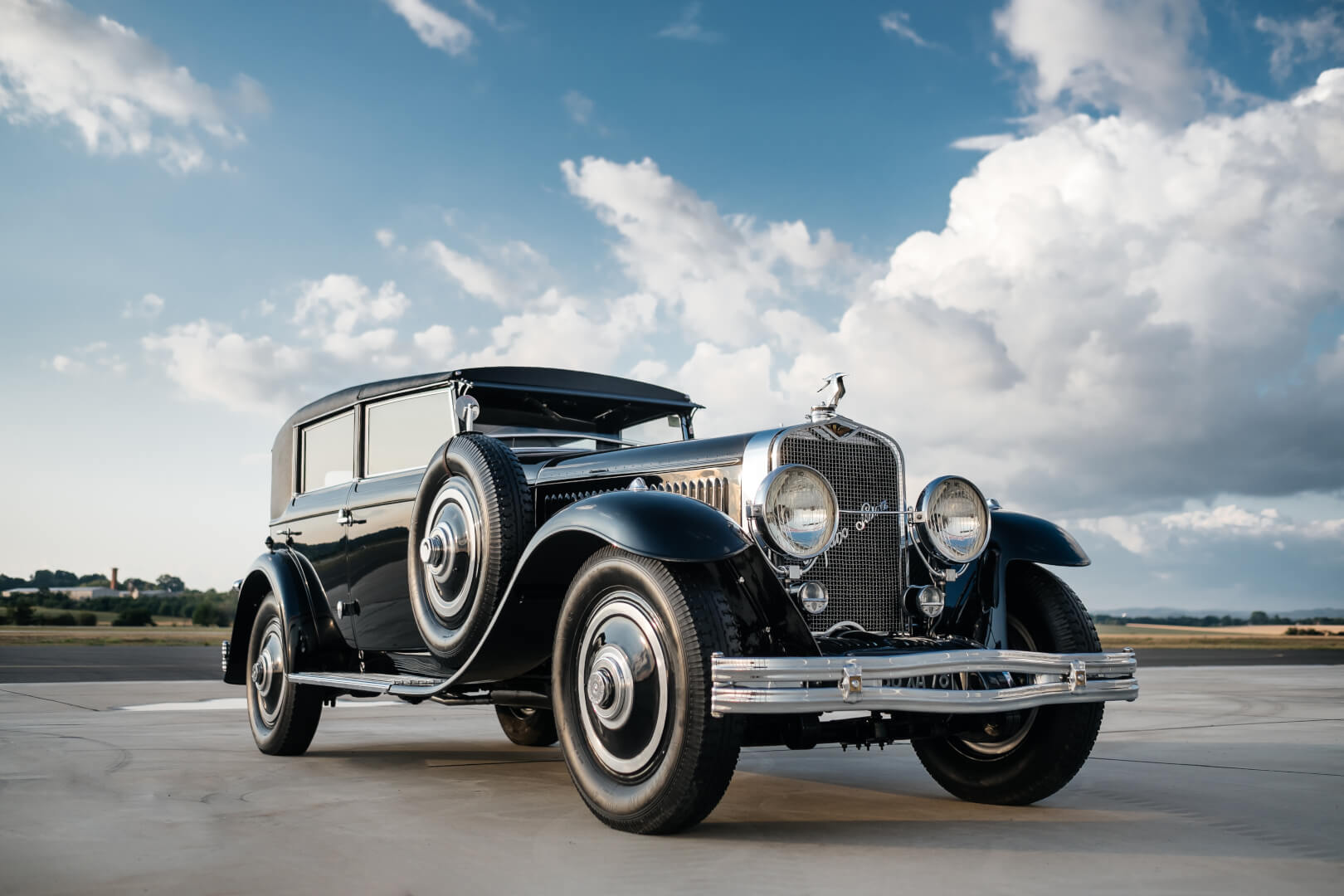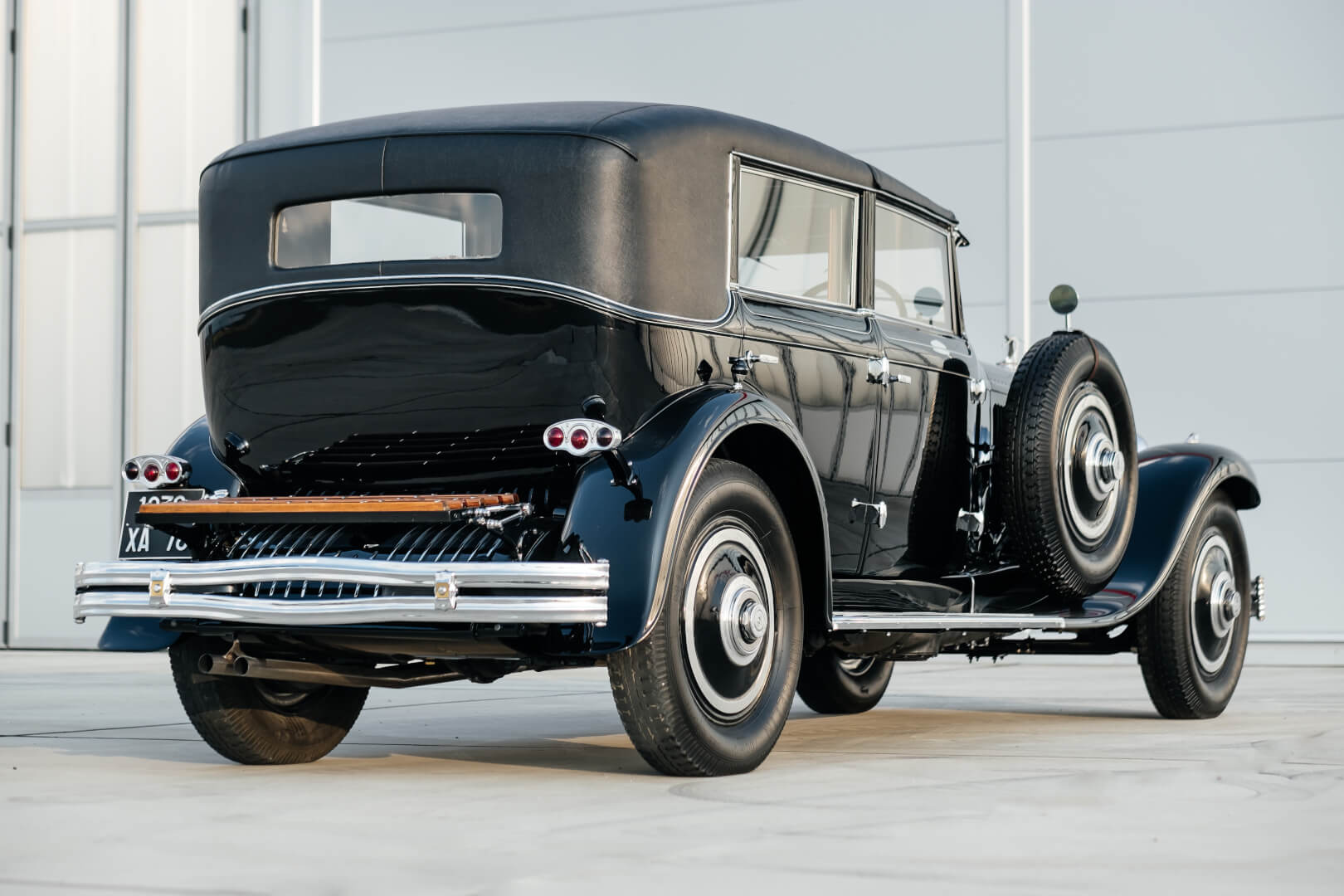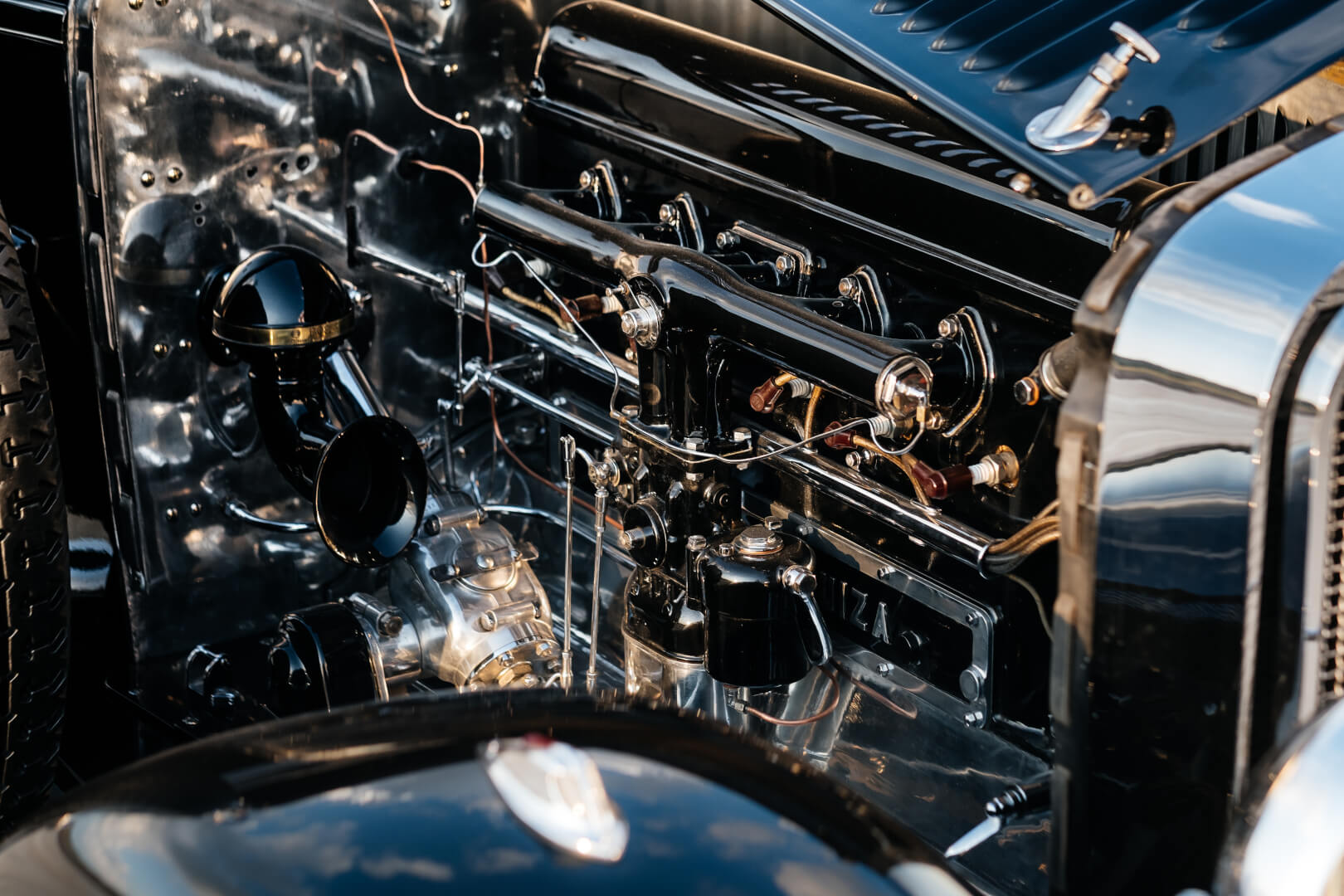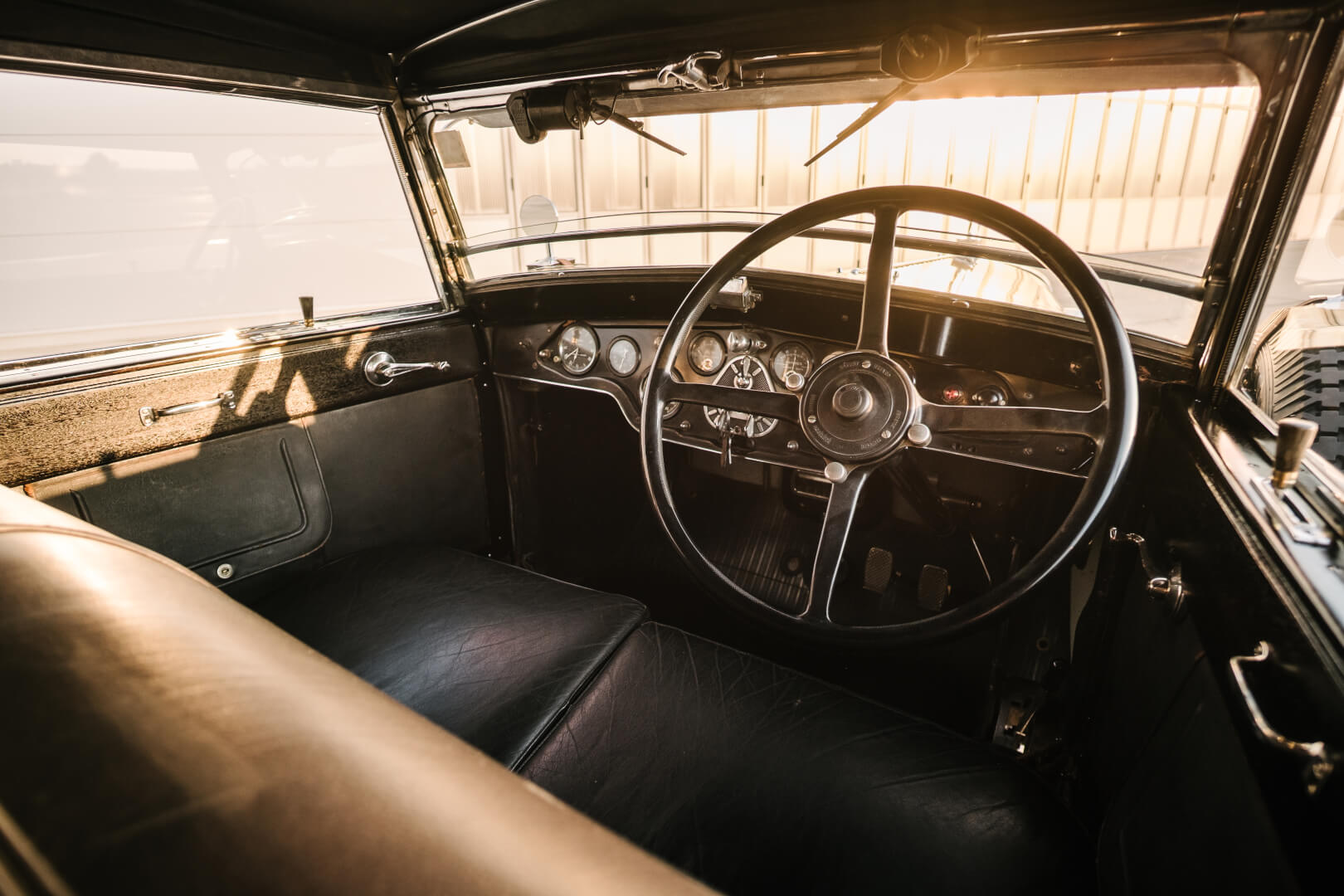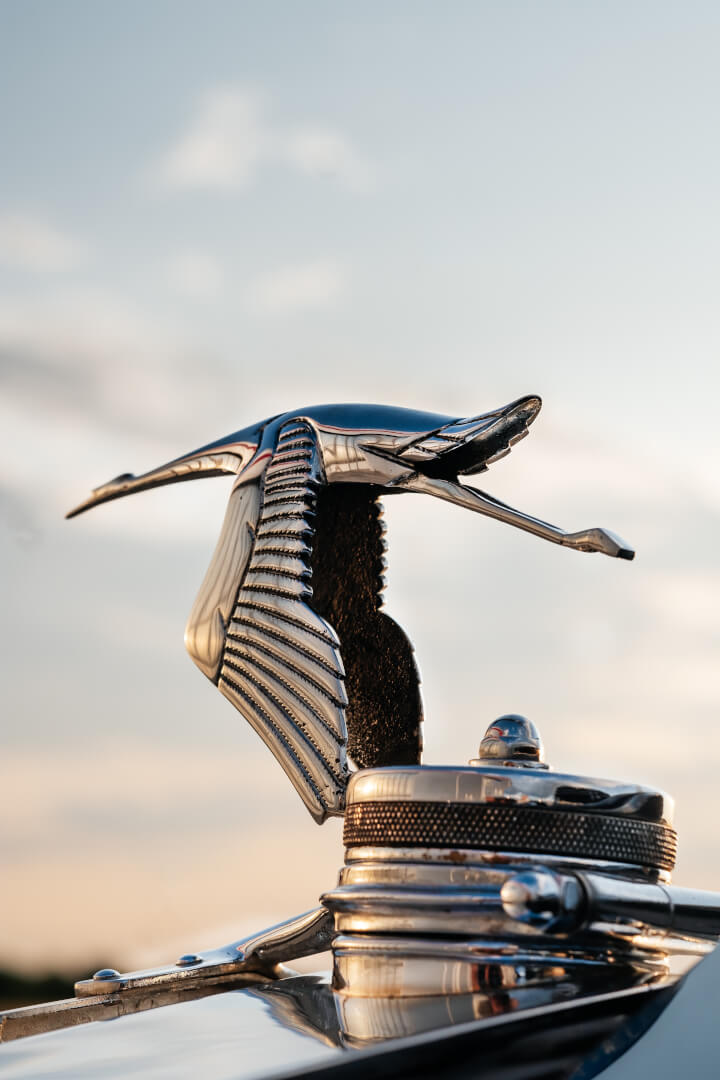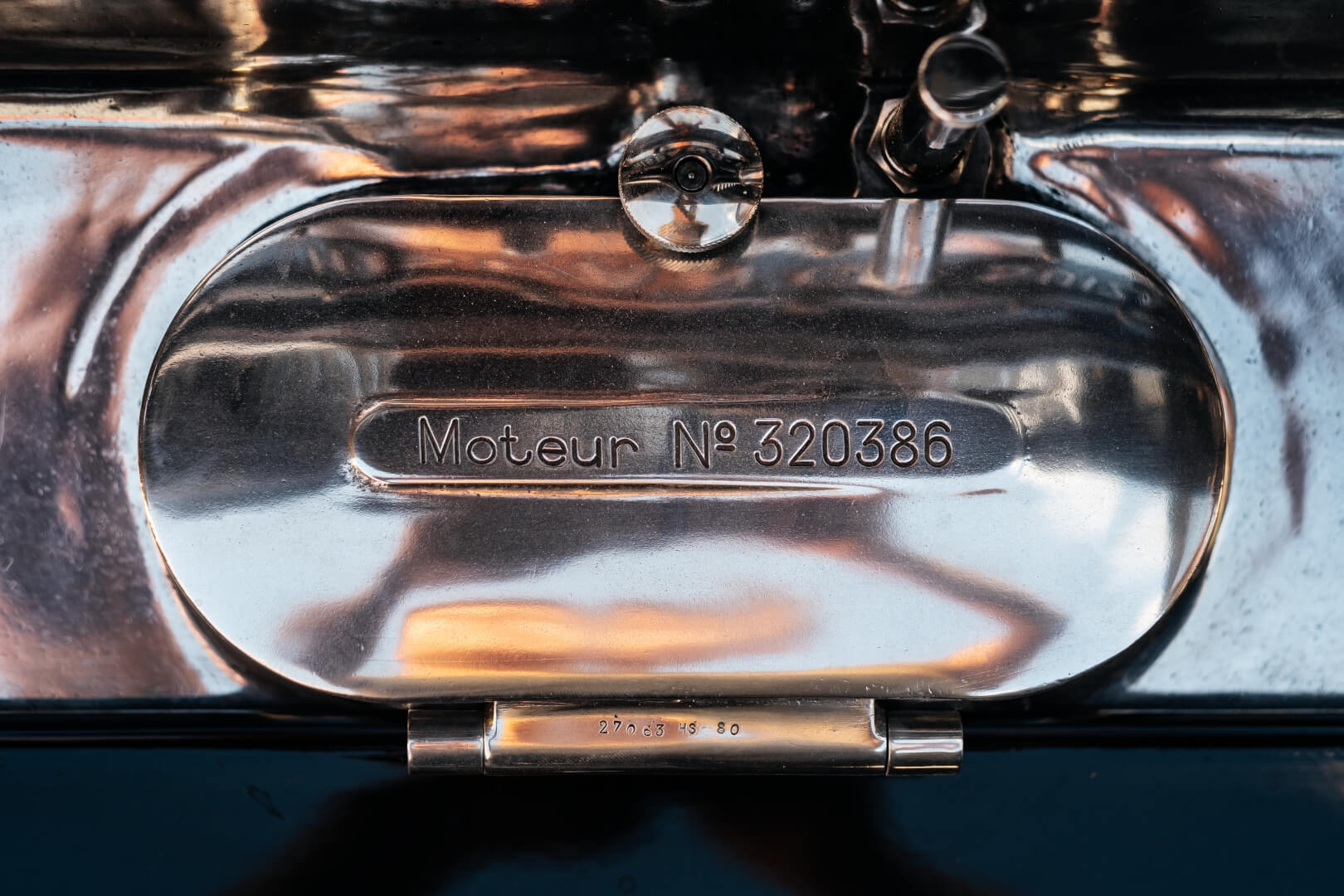Informations
Hispano-Suiza Automobiles were always one of the greatest automobile creations of all time. The choice of Industrial tycoons, Hollywood stars and European Royalty. Those cars established in the front rank of luxury automobile manufacturers following the end of WWI. It was a H6 which became a sensation of the 1919 Paris Show. The car featured a light yet rigid four-wheel- braked chassis that matched its state-of-the-art power unit for innovation. This car was revolutionary, offering speed, luxury, quality and an unequalled level of craftsmanship. They were good enough to compete successfully with Rolls-Royce, Bentley, Bugatti or Isotta Fraschini. The engine followed aircraft design practices, being cast in aluminium with steel liners. It had a fixed-head design with two valves per cylinder, seven main bearing crankshaft, and full-pressure lubrication. The original H6 had been superseded in 1921 by the H6B, which retained the original 6.6-litre engine, but at the behest of André Dubonnet of aperitif fame, a version was produced which was bored out to 110 mm for a capacity of 7,982 cc. This more powerful unit was later adopted for the successor H6C model, introduced in 1924. The body on this 1930 H6C chassis #12399 with straight-six 8-litre engine was made by well-known French coachbuilder Gallé. By many considered as a Hispano-Suiza masterpiece. This H6C have many different parts than other H-series chassis. The reason why, is because this particular car was delivered as new directly from French factory to Miguel Mateu, the Spanish financier of Hispano-Suiza. Today the car remains in its original condition and regarding Charles Howard, it is better driving car than most J12s.
© HISPANO-SUIZA AND CLASSIC CLUB. All Rights Reserved.
Created by Tomáš Folprecht
